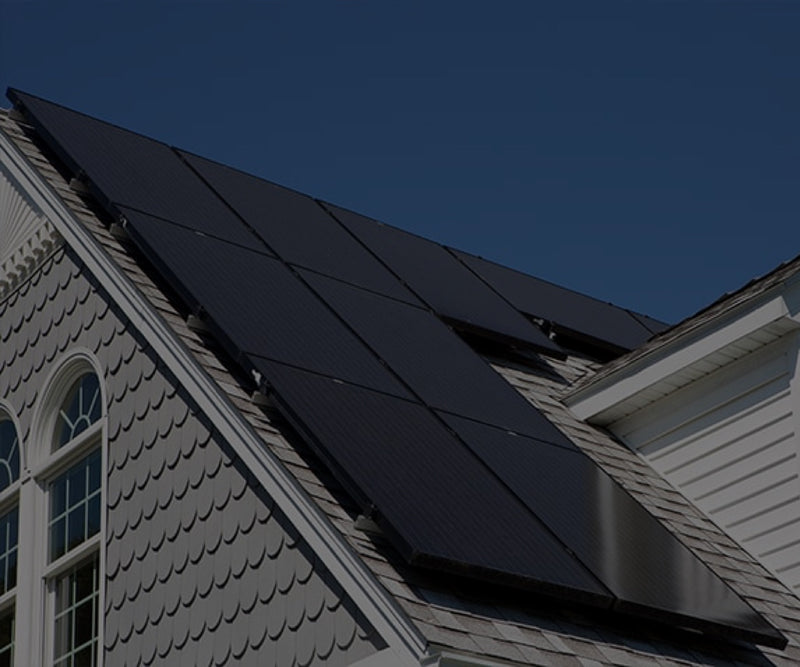Sizing Solar Systems: A Step-By-Step Walkthrough

Online solar calculators can give a rough estimate of how much solar you need to power your home, but you may want to perform your own sizing calculations to fine-tune your choices. Here’s a step-by-step overview of the process we follow when sizing solar systems for our customers.
Note: This article applies to grid-tie systems only. Off-grid systems are more complex because battery banks are sized independently of the solar array, so no two systems are quite the same.
How to Size a Solar System in 6 Steps
When sizing a solar system, follow these steps to find out exactly what will cover your energy needs. If you'd just like a quick estimate without having to work through the math, feel free to use our solar calculator instead.
Step 1: Determine Your Average Monthly kWh Usage
Statistics show that most people consume more electricity during the summer and winter, when the A/C or heat is running. If possible, collect your last 12 months of electric bills, then tally up your kWh usage and divide by 12 to get a monthly average.
Step 2: Calculate Your Daily kWh Usage
Next, divide your monthly kWh usage by 30 to estimate your average daily kWh usage. The average American home uses about 900 kWh per month, so we’ll use that in our example:
900 kWh / 30 days = 30 kWh per day
Step 3: Estimate the Amount of Sunlight Your Solar Panels Will Receive
Sunlight availability affects how much energy your solar panels generate. Use NREL’s GHI maps to see how many sun hours you can expect to get in your location.
Below is NREL's map for average annual sun hours in the US:

Take the daily kWh target from step 2 and divide it by the number of sun hours in your location. For example, in Anaheim, CA, where GoGreenSolar is headquartered, we get about 5 sun hours per day:
30 kWh per day / 5 sun hours = 6 kW solar array
Step 4: Account for Inefficiencies
From there, we need to add a bit of overhead to account for inefficiencies and degradation rate of the panels.
The output of solar panels drops slightly each year, which is outlined by their performance warranty. If your solar panel’s performance warranty guarantees 80% performance after 25 years, then their degradation rate is calculated as 20%/25 years, or 0.8% production loss each year. By the end of its lifecycle, a 400W-rated panel would only output 320 watts.
Learn more about Solar Panel Effieciency
In addition, solar panels are tested in ideal conditions ‒- a temperature controlled lab with nothing obstructing the panels. In the real world, solar panels often fall short of these lab-tested conditions, meaning they produce a bit less power than their wattage rating.
Because of these factors, it’s wise to budget extra solar capacity so that you can reach your target production figures after accounting for the inefficiencies of the system.
20% is a good amount of headroom to account for inefficiencies. Multiply your solar array size by 1.2 (120%) to account for this:
6 kW x 1.2 = 7.2 kW solar array
Step 5: Full or Partial Offset?
Most grid-tie homeowners choose to offset 100% of their energy needs with solar. But it is also possible to start with a smaller system for partial offset, and then expand down the line as the budget allows for it.
If partial offset is your goal, you can account for that here. For example, let’s say you want to start by offsetting half your energy usage with solar:
7.2 kW solar array * 0.5 = 3.6 kW solar array
In this scenario, a 3.6 kW array would cover 50% of your energy usage, cutting your electric bill in half.
Step 6: Determine How Many Solar Panels You Need
Once you have your final array size, simply divide by the wattage of your desired solar panels to figure out how many panels you need.
Using our example of a 7.2 kW (7,200-watt) array for 100% offset, here's a sample system that would cover our needs:
7.2 kW solar array with 400W Phono Solar panels: 7,200 watts / 400 watts = 18 panels
What’s the Cost of Solar Panels in 2022
Sizing a Solar System: Other Considerations
That should be enough to help you size a solar power system that covers your energy needs. However, be aware that there may be more factors to consider if your utility offers a net metering program that allows for energy resale or variable billing rates.
A common use case is utilities that charge time-of-use (TOU) rates. Under TOU billing, electricity rates spike around 5-9PM to account for higher demand, as people come home from work/school and usage is at its daily peak.
If your utility provider charges higher TOU rates, it may be wise to install solar panels on the Western face of your roof. While South-facing panels produce more kWh of energy, West-facing panels may be more cost-effective overall because they will produce power later in the day, offsetting higher TOU rates during the peak usage period.
Research the details of your utility's net metering program to see if you need to tweak your solar system sizing to get the most value out of your panels. If you need guidance, reach out to us for a free solar consultation. Our team of expert solar designers can help you size a solar system based on your unique circumstances.

Solar Calculator

Which Solar Kit Do I Need?
GET STARTED WITH SOLAR
WE’LL HELP YOU FIGURE OUT YOUR SOLAR NEEDS!
Fill out the form for a complimentary solar quote that includes a custom satellite layout, system design and a breakdown of total project cost and estimated savings.
